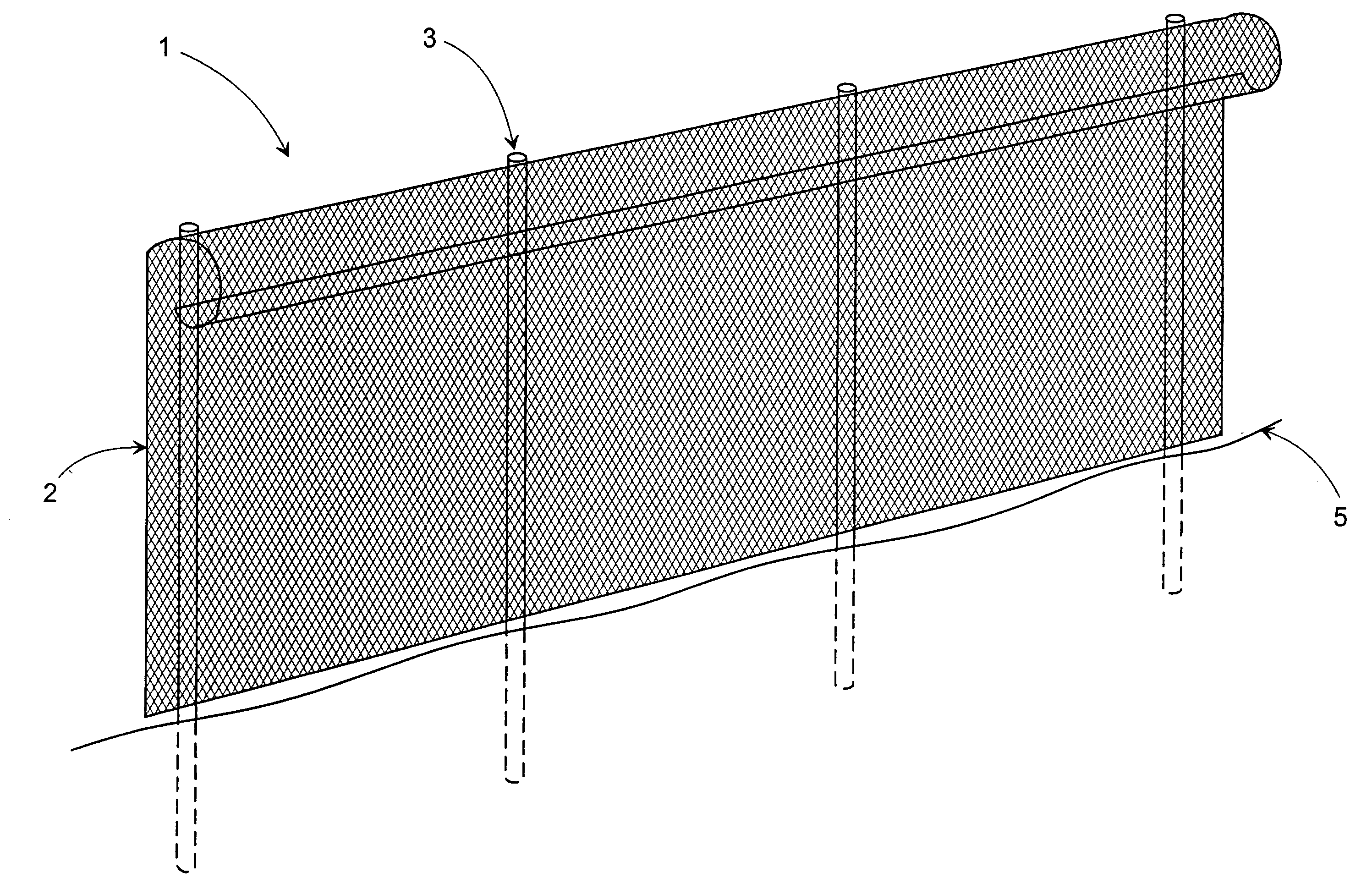Fencing
a technology of fencing and wires, applied in the field of fencing, can solve the problems of limiting the possibility of exporting crops to these countries, environmental problems, and high price of insecticides, and achieve the effects of reducing the need for drugs, improving health conditions, and raising milk and meeting production
- Summary
- Abstract
- Description
- Claims
- Application Information
AI Technical Summary
Benefits of technology
Problems solved by technology
Method used
Image
Examples
Embodiment Construction
[0122] The invention will be explained in more detail in the following with reference to the drawings, where
[0123] FIG. 1 shows a fencing according to the invention in a perspective view,
[0124] FIG. 2 shows the fencing in a cross sectional view.
[0125] The preferred embodiment of the invention is, as shown in FIG. 1. A fencing 1 with a mesh structure 2 which is attached to rigid, substantially upright support members 3 to which the mesh 2, preferably a stiff net, is attached. The size of the openings in the mesh may be chosen to prevent certain insects to traverse the fencing 1, while smaller insects have the possibility to move through the mesh openings. The size of the openings in the mesh may alternatively be chosen to prevent almost any insect to traverse the mesh.
[0126] An insect 4, which is crawling on the ground surface 5 may pass the fencing, because the lower edge of the mesh is located at a certain height above the ground.
[0127] Alternatively, for prevented crawling insects...
PUM
 Login to View More
Login to View More Abstract
Description
Claims
Application Information
 Login to View More
Login to View More - R&D
- Intellectual Property
- Life Sciences
- Materials
- Tech Scout
- Unparalleled Data Quality
- Higher Quality Content
- 60% Fewer Hallucinations
Browse by: Latest US Patents, China's latest patents, Technical Efficacy Thesaurus, Application Domain, Technology Topic, Popular Technical Reports.
© 2025 PatSnap. All rights reserved.Legal|Privacy policy|Modern Slavery Act Transparency Statement|Sitemap|About US| Contact US: help@patsnap.com



